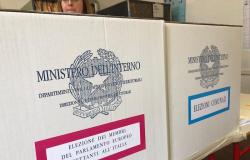
The 110% rate agreed with the Super bonus represented a unique event on the international scene. Together with the possibility of invoice discount or credit transfer, it has undoubtedly constituted an unprecedented driving force for energy requalification works, stimulating additional investments with non-negligible macroeconomic impacts, which however has produced critical issues in many aspects, primarily in terms of public finances. To draw up a provisional budget on the Super bonus and the Bank of Italywhich analyzed the macroeconomic and public finance impact, but also the issue of transferability and other critical aspects.
The occasion is n. 845 of Economics and finance issues from the Bank of Italyby title “Improving the energy efficiency of homes in Italy: the state of the art and some considerations for public interventions”.
The analysis, signed by G. de Blasio, R. Flowers, L. Lavecchia, M. Loberto, See Michelangeli, E. Padovani, E. Pisano, ML Rhone, G. Rome, T. Rosolin And P. Tommasino, is dedicated to the national regulatory framework regarding the improvement of the energy efficiency of buildings and provides data on the characteristics of Italian homes and their occupants. In this context, it summarizes the literature on the costs and benefits of investments in energy efficiency and on the role of the public sector, financial intermediaries and the private sector. And, based on the Italian and other countries’ experience, it formulates some considerations for the design of public interventions aimed at promoting the improvement of energy efficiency.
The judgment on the Superbonus
Impact on public finances. According to analysts at Bank of Italythe cost of Super bonus for the treasury it was huge and “much higher than initially estimated”. Based on the available data, the tax credits accrued until the end of 2022, together with those due for the facade bonus, should have totaled approximately 90 billion. For 2023, it can be estimated that the credits accrued for the Super bonus were just under 80 billion.
Cost-effectiveness of the measure. With respect to the objective of reducing climate-changing emissions, “Although rigorous assessments of the impact of the measure from an environmental perspective are not yet available, the types of interventions encouraged do not appear to be among the most effective and would achieve modest results in terms of reducing CO2 emissions”. The Superbonus would therefore be characterized by a poor relationship between costs incurred and the effectiveness of the measure: based on initial evidence, in fact, in the best scenario, the environmental benefits of the Superbonus would repay the financial costs in around 40 years. Other estimates suggest that the return time is greater than the expected life of the specific interventions even with particularly penalizing social cost of carbon hypotheses (Oipe, 2023).
Macroeconomic impact. In terms of the ability to stimulate additional investments, according to preliminary analyses, in the two-year period 2021-22 the additional expenditure due to the bonuses was equal to approximately two thirds of the value of the investments that benefited from the incentives. Alongside the additional amount, there is in fact a share of expenditure that families would have made even in the absence of benefits (both relating to projects already planned and to projects that replaced others of similar amount). Furthermore, it is likely that the facade bonus and the Superbonus have led, in some cases, to a redefinition of families’ investment plans, with expenditure scheduled for subsequent years being brought forward to the 2021-22 two-year period.
Distributional aspects. From a distribution point of view, the Superbonus, like other construction incentives, being usable regardless of income status, is configured as a regressive measure; however, the possibility of invoice discount or credit transfer has attenuated this nature.
The question of transferability. With regard to the transformation of the deduction into transferable credit, the scholars of Bank of Italy recall that this instrument was not new in the Italian legal system: “this possibility also existed before 2020 for benefits such as the Ecobonus itself, but the transfer was permitted only to subjects connected to the relationship that had given rise to the deduction (e.g. companies carrying out the works), with the express exclusion of the Administrations public and banks”. The reason was to be found in the public accounting rules according to which the transferability to these subjects can lead to the classification of these instruments as “payable”, with a different impact on the temporal distribution of the charges for the purposes of calculating the net debt.
“The extension of the transferability regime to all construction bonuses and the inclusion of banks in the group of transferees – together with the 110% rate and the initial simplicity of the transfer methods – have given rise to a real market of these credits, which soon came to absorb almost all of the fiscal capacity of financial institutions”, specifies notebook no. 845 in economics and finance. This led the statistical authorities to reclassify the credits deriving from Super bonus as payableincluding them in net debt and leading to an upward revision of the public deficit (by almost three points of GDP in 2022).
By mid-2024 the statistical authorities will re-evaluate the accounting treatment of the benefits, taking note of the significant changes made to the usability of the credit and the trends on the transferable credit market (in particular, the degree of difficulty in the actual transfer). Overall, these uncertainties inherent in the accounting for the instrument contribute to “make its evaluation less transparent and budget planning more difficult”.
Other critical aspects. In the case of Superbonuses, the 110% relief measure eliminated any form of participation of the beneficiaries in the cost, contributing to theincrease in prices in the construction sector (also due to the excess demand for goods and work compared to the available supply) in a context, that of emerging from the crisis generated by the pandemic, which was already suffering from significant bottlenecks and tensions on the markets of various raw materials and products . The insufficiency of anti-avoidance measures has led to the emergence of high volumes of fraud (largely attributable to the facade bonus). To counteract these effects, among other things, measures have been adopted to strengthen preventive controls, price lists have been introduced and restrictions have been imposed on the circulation of credits. The latter, however, have produced a hardening of the credit market, which could no longer be sold. This circumstance led the legislator to review the restrictions by broadening the range of options for using the credits; solutions which, however, were not sufficient to eliminate the problem of blockages.
Tags: Bank Italy Superbonus poor costeffectiveness ratio Palazzo Kochs opinion macroeconomic impact public finances





